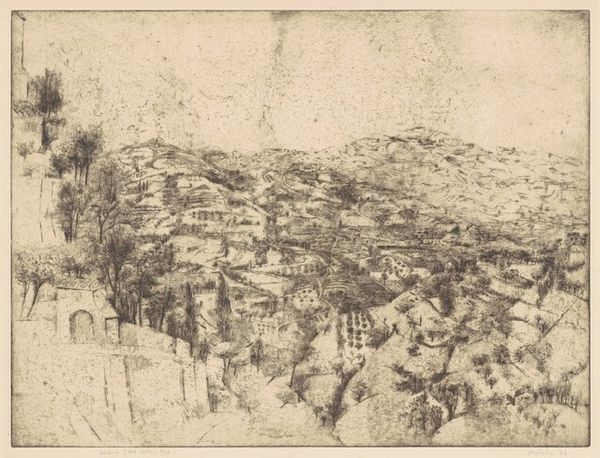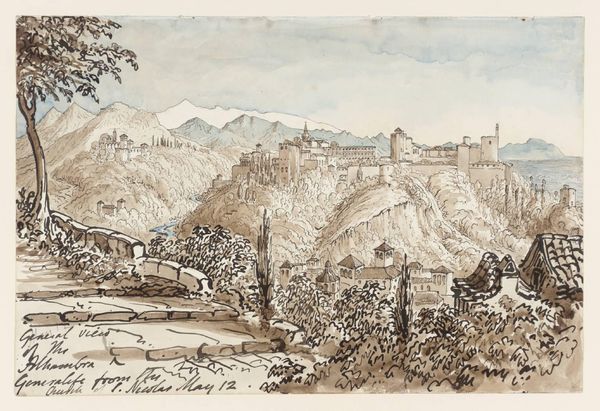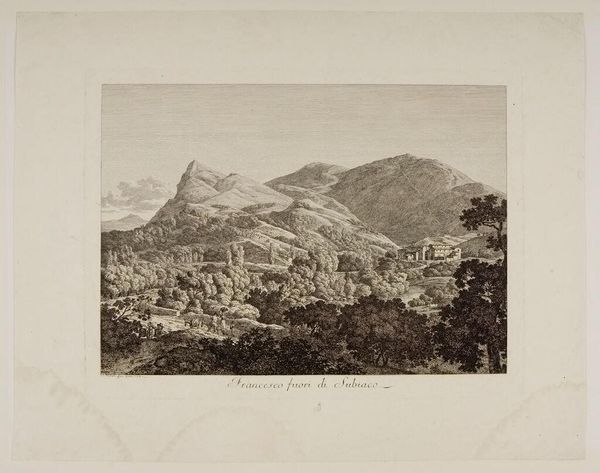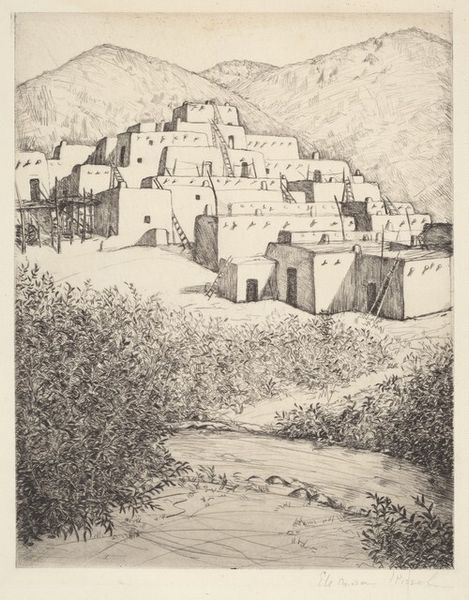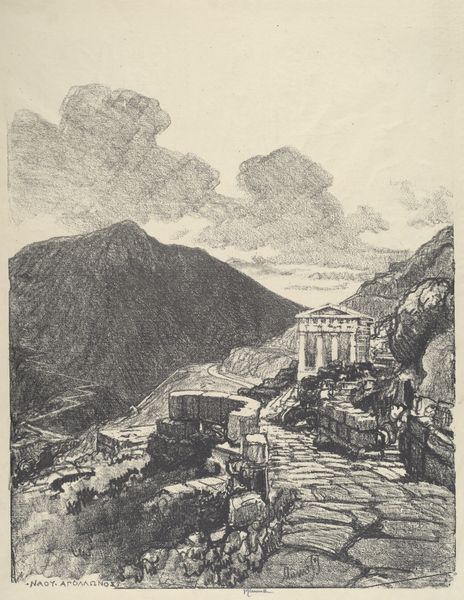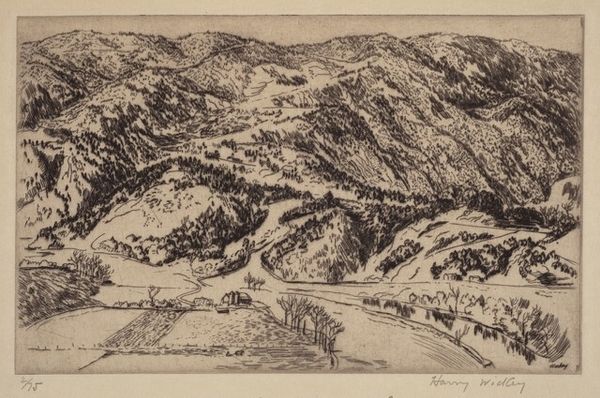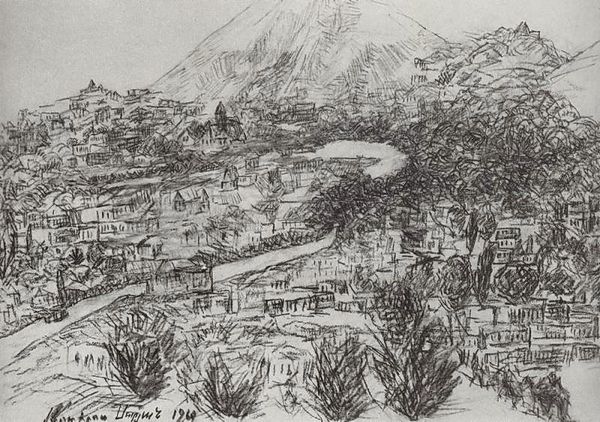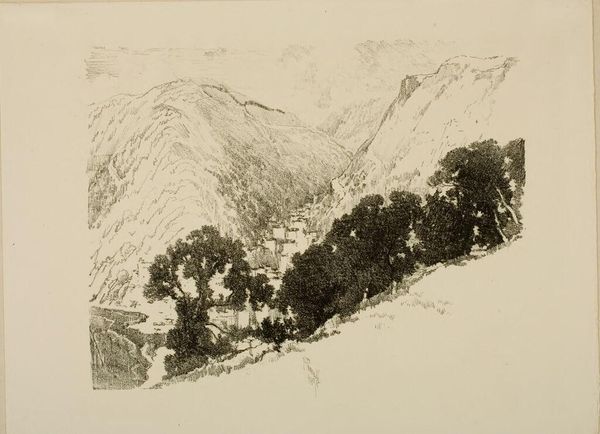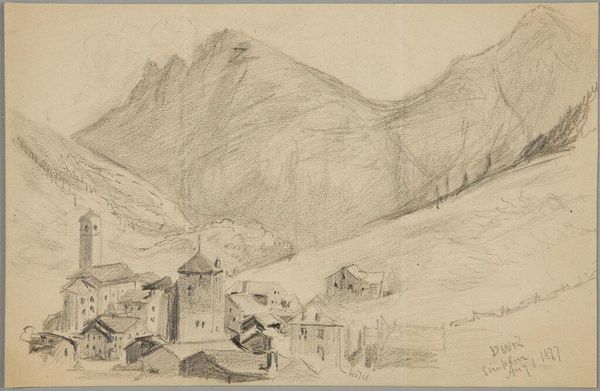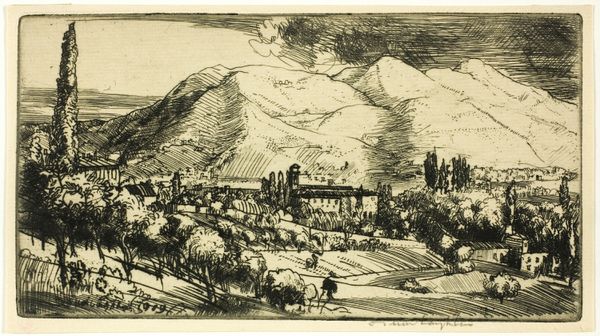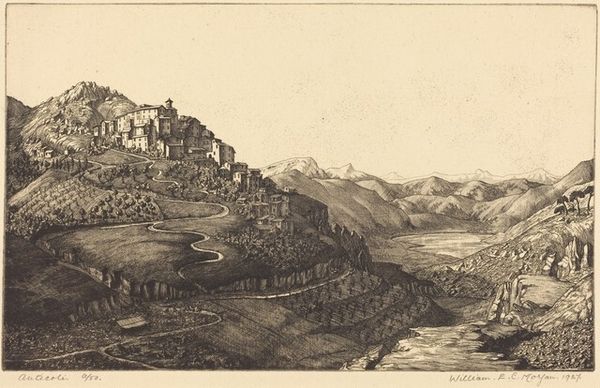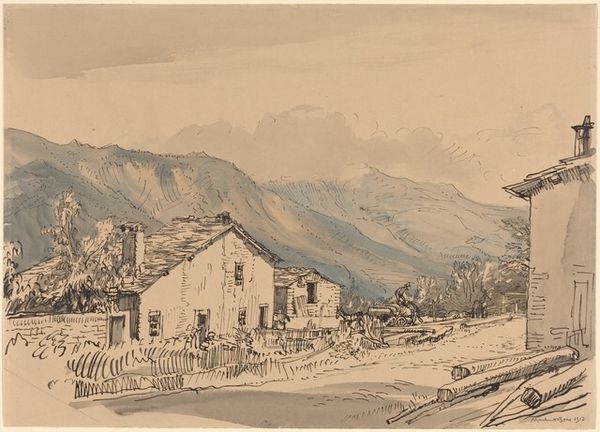
drawing, print, etching, ink
#
drawing
# print
#
etching
#
landscape
#
ink
#
line
#
cityscape
#
realism
Dimensions: plate: 27.31 × 33.66 cm (10 3/4 × 13 1/4 in.) sheet: 32.39 × 39.69 cm (12 3/4 × 15 5/8 in.)
Copyright: National Gallery of Art: CC0 1.0
Editor: Samuel Chamberlain’s 1940 etching, "Valley of the Var", really pulls me in. The meticulous detail captures the entire vista, almost overwhelming the viewer with information. What symbolic weight do you think is at play here? Curator: That's a fantastic question. Think about what valleys traditionally represent: shelter, passage, often refuge. Chamberlain created this in 1940, didn’t he? Editor: Yes, just as the war began. Curator: Right. Do you see a relationship to its role as a defensive location? Editor: It appears to have fortress walls; could this represent protection and enclosure amidst a time of crisis? Almost a symbolic plea for safety? Curator: Precisely. Consider too the intricate line work. It doesn't simply depict the landscape; it seems to define every stone, every rooftop. That intense detail reinforces a sense of solidity and permanence during the wartime period, attempting to convey a world of solidity when much of the world was collapsing into ruin. Do you notice a dominating atmospheric effect as well? Editor: Now that you mention it, I do see some cumulus clouds. It might represent uncertainty... I mean, is it fair weather or is there a storm coming? Curator: Excellent observation. I believe those clouds reinforce the fragility and unpredictability of human life and how small our dwellings are against the backdrop of that. Ultimately, "Valley of the Var" captures a sense of human persistence against the chaos and uncertainties of war. What is your take on that? Editor: Understanding the context definitely enriches my view of the artwork! It's much more than a pretty landscape. Thanks.
Comments
No comments
Be the first to comment and join the conversation on the ultimate creative platform.
